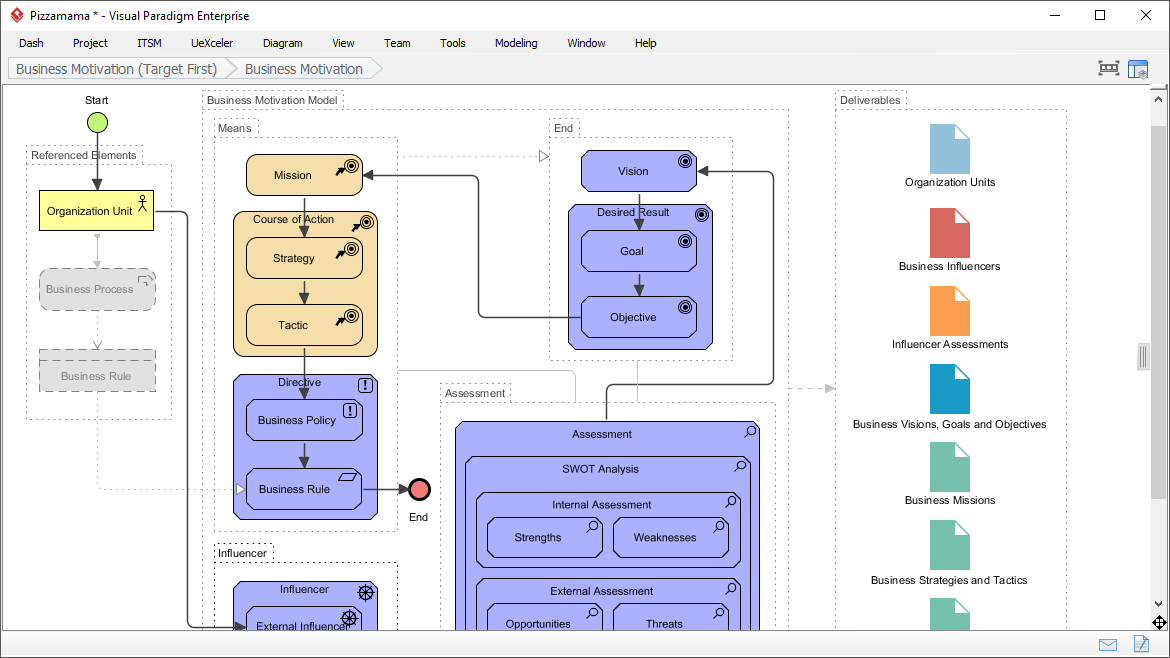Strategic Analysis is a core step in the Strategic Learning Cycle. Every strategist should have a toolset of analytical models at his or her disposal. However, there are many techniques and tools available for strategy analysis. If you google around the web, you will find a long list of options available. The challenge is to acquire the right techniques and tools for a given business problem. This article give you a brief introduction for you to jumpstart the strategic analysis learning process.
First comes first, what is strategic analysis? Strategic analysis helps you explore your growth options, addresses challenges within your industry, and makes better corporate decisions. Strategy analysis is an approach to facilitating, researching, analyzing, and mapping an organization's abilities to achieve a future envisioned state based on present reality and often with consideration of the organization's processes, technologies, business development and people's capabilities.

You need to look outside of our organization to identify the changes out there and to look forward and think about the opportunities in future. Strategic analysis is not just about understanding changes. It is about turning this into concrete actions through generating options and choices, making decisions and integrating this into your organization's planning process.
Just as having the right tools won't necessarily make you a good mechanic, having the right strategy analysis tools won't automatically make you a good strategist - but they will help you get jobs done more effectively. Here is a list of essential tools for strategy analysis:
SWOT analysis is a technique developed at Stanford in the 1970s, frequently used in strategic planning. SWOT is an acronym for Strengths, Weaknesses, Opportunities, and Threats and is a structured planning method that evaluates those four elements of an organization, project or business venture. A SWOT analysis is a simple, but powerful, framework for leveraging the organization's strengths, improving weaknesses, minimizing threats, and taking the greatest possible advantage of opportunities.
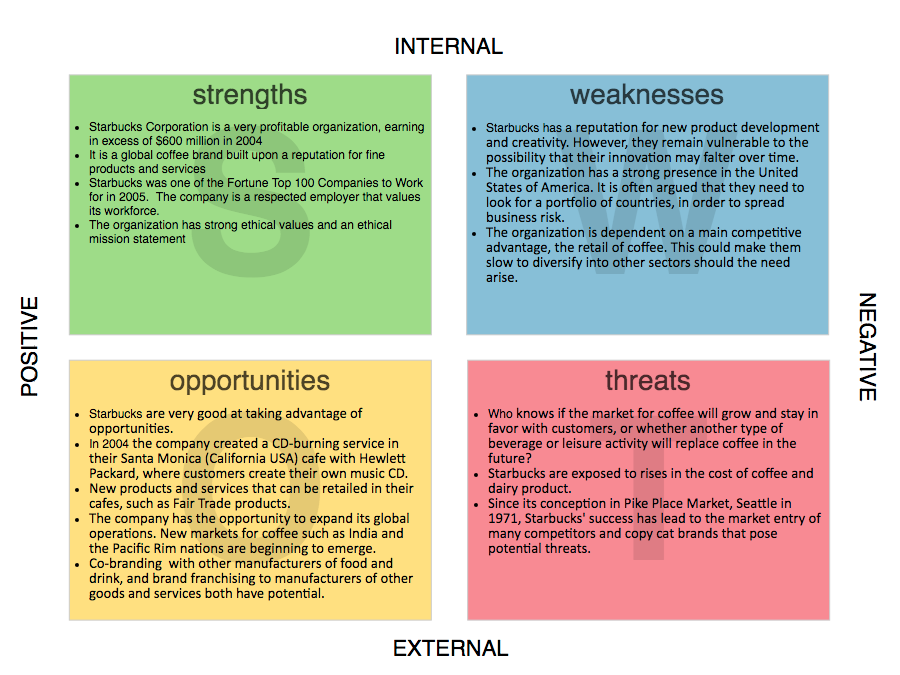
SWOT analysis is a process where the management team identifies the internal and external factors that will affect the company's future performance. It helps us to identify of what is happening internally and externally, so that you can plan and manage your business in the most effective and efficient manner.
The PEST analysis is a useful tool for understanding market growth or decline, and as such the position, potential and direction for a business. PEST is an acronym for Political, Economic, Social and Technological factors, which are used to assess the market for a business or organizational unit. Sometimes it's expanded to include legal and environmental factors and called a PESTLE analysis.
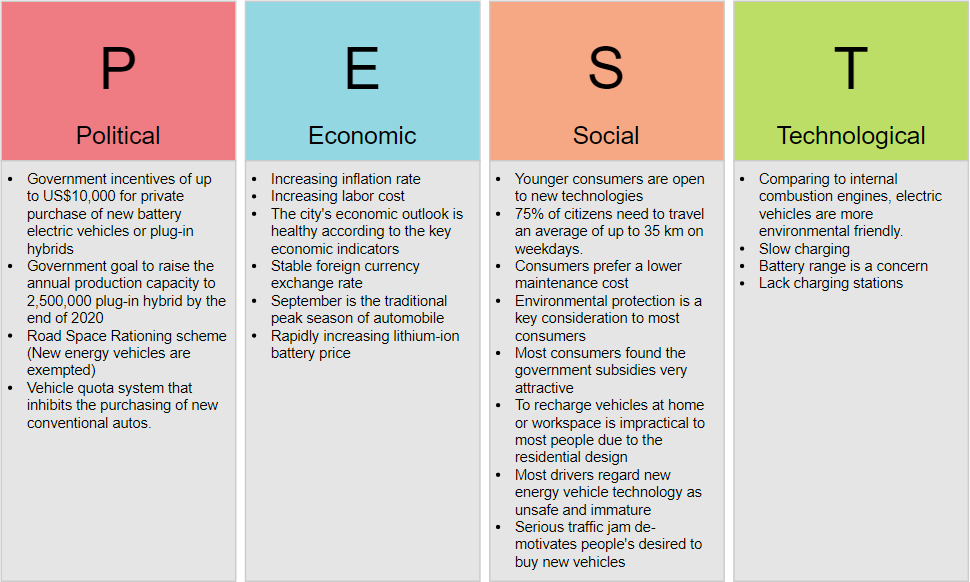
A PEST analysis guides us to identify effective strategies for setting priority, allocating resources, planning for time and development roadmap and formulating control mechanisms. With this analysis, you can identify potential opportunities and threats associated with your strategy and figure out ways to take advantage of them and avoid them.
Value chain analysis is a way to visually analyze a company's business activities to see how the company can create a competitive advantage for itself. Value chain analysis helps a company understands how it adds value to something and subsequently how it can sell its product or service for more than the cost of adding the value, thereby generating a profit margin. In other words, if they are run efficiently the value obtained should exceed the costs of running them i.e. customers should return to the organization and transact freely and willingly.
Originated in the 1980s by Michael Porter, value chain analysis is the conceptual notion of value-added in the form of a value chain. He suggested that an organization is split into 'primary activities' and 'support activities'. The figure below divides activities into primary and support activities as suggested by Porter's Value Chain Analysis model.
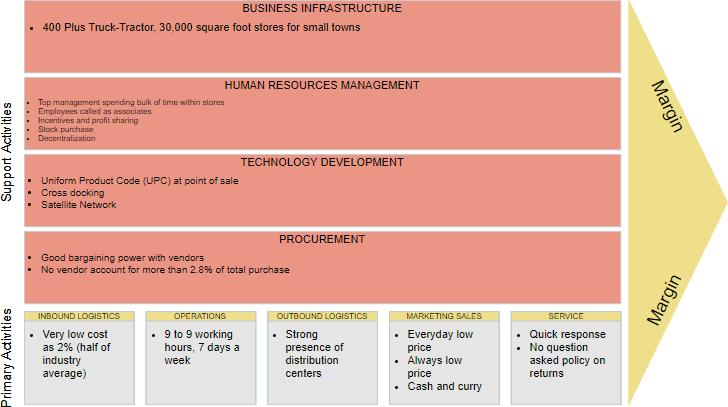
Michael Porter developed the Five Forces Model in 1980. Michael Porter's Five Forces is a powerful competitive analysis tool to determine the principal competitive influence in a market. It is a broadly used model in business that refers to the five important factors that drive a firm's competitive position within an industry. By thinking through how each force affects you, and by identifying the strength and direction of each force, you can quickly assess the strength of the position and your ability to make a sustained profit in the industry. Thus Five Forces analysis helps you stay competitive by:
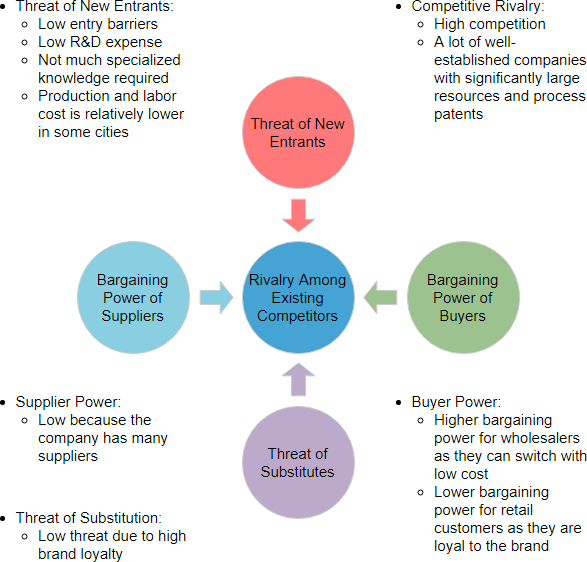
The Four Corners Analysis, developed Michael Porter, is a model well designed to help company strategists assess a competitor's intent and objectives, and the strengths it is using to achieve them. It is a useful technique to evaluate competitors and generate insights concerning likely competitor strategy changes and determine competitor reaction to environmental changes and industry shifts. By examining a competitor's current strategy, future goals, assumptions about the market, and core capabilities, the Four Corners Model helps analysts address four core questions:
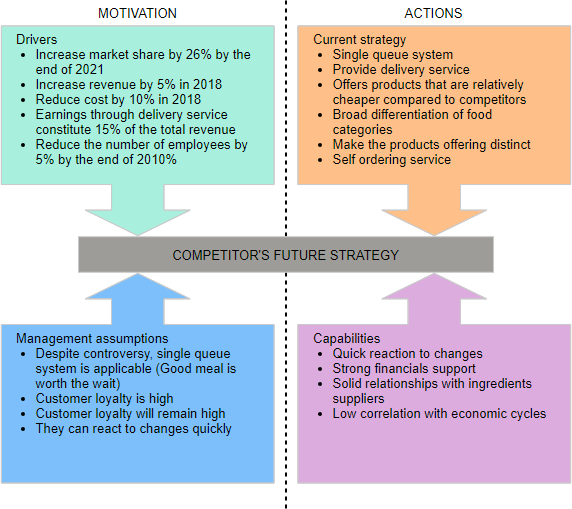
If an enterprise prescribes a certain approach for its business activity, it ought to be able to say why and what result(s) is the approach meant to achieve. The Business Motivation Model (BMM) is an OMG modeling notation for support of business decisions about how to react to a changing world. An enterprise would use it by acquiring a BMM modeling tool and then creating its own BMM - populating the model with business information specific to the enterprise. There are two broad purposes:
The BMM provides support in four areas, as illustrated in the diagram below:
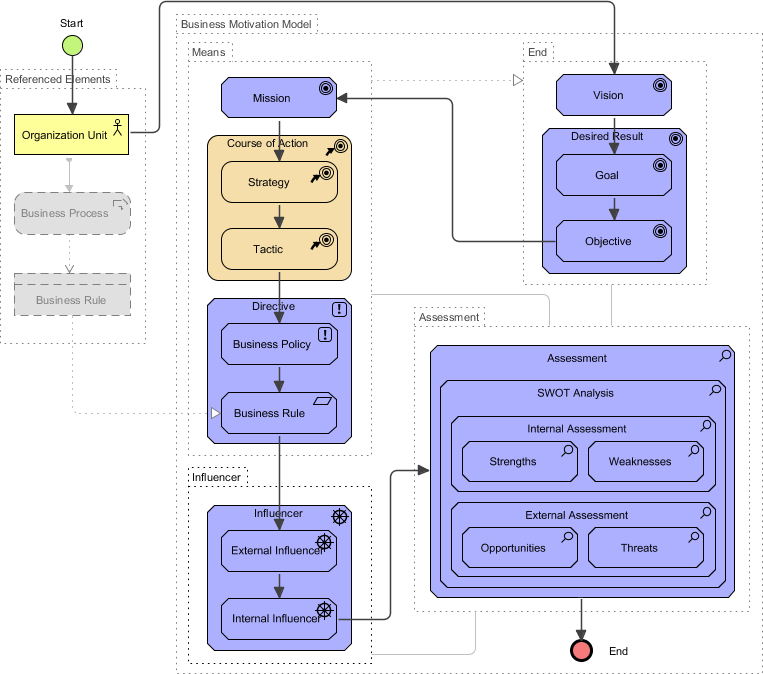
The scope of an enterprise BMM may be the entire enterprise, or an organization unit within it. Higher-level organization units may appear to lower level units as influencing organizations, outside the 'enterprise' boundary, and their directives may have the status of regulations. An enterprise BMM does not have to represent the entire enterprise. A stakeholder can create a BMM of a partial view, referencing only those parts of the business that are relevant to his/her responsibilities and decision-making authority.
Ends define what an enterprise wants to be - the states it desires to be in. There are three levels:
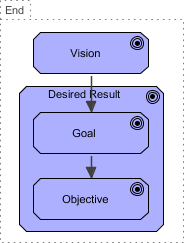
Means define what an enterprise has decided it needs to do to achieve its ends. There are three kinds:
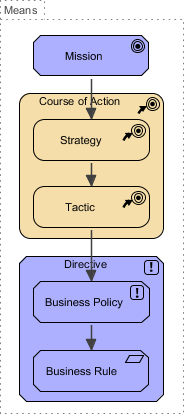
An influencer is something that an enterprise decides might affect it. There are two broad types:
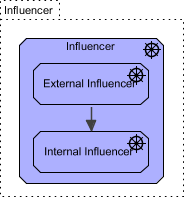
When an influencer causes a significant change, the enterprise makes an assessment of its impact, identifying risks and potential rewards. There may be multiple assessments, perhaps from different stakeholders.
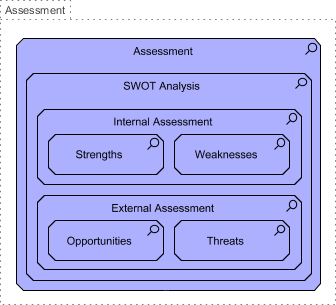
The OMG Business Motivation Model (BMM) provides an excellent framework for developing, communicating and managing strategic plans. This framework reflects widely accepted strategic planning techniques, helping you identify strategic drivers and strategic goals in strategic planning.
The learning curve of performing BMM could be somehow steep for beginner. The interconnection among elements are hard to maintain and visualize and that's why the Guide-Through Process for BMM come about.
BMM Guide-Through features a generic process that assists you in developing a Business Motivation Model. By following the process step-by-step, the core components of strategic planning will be identified. The resulting information will be archived in document form automatically.
